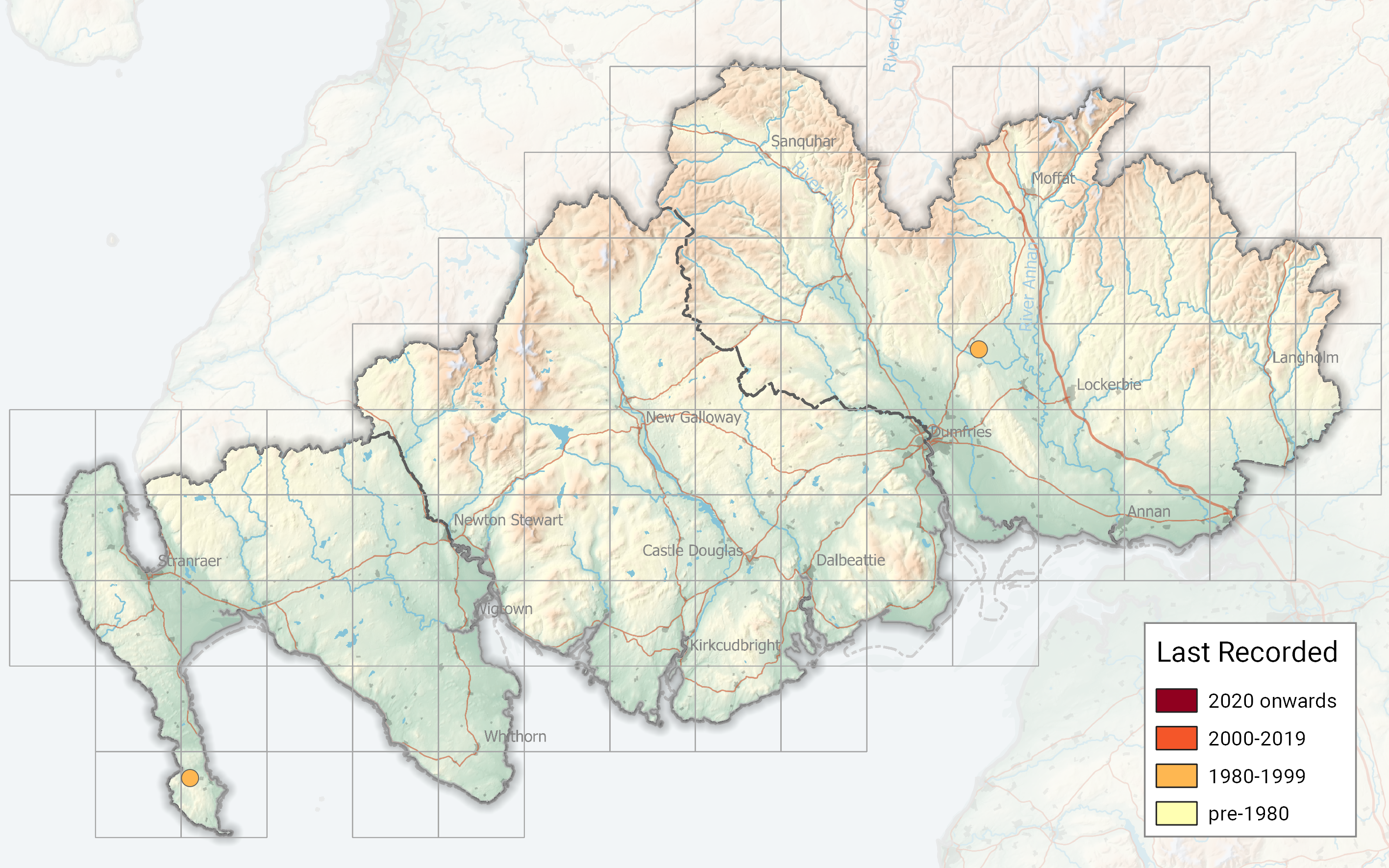Identification
Due to its small size it is easily mistook for a micro-moth, but the conspicuous nearly straight brown and white central cross-line on a yellowish-white forewing, and a outer cross-line shaped like a question-mark, looking across the forewing, should help to identify it. Hindwing is whitish.
Life cycle
At least two generations abroad. Unknown to overwinter in Britain. Larvae have been found in Britain during July to September, with pupation taking place in attached cocoon on the foodplant.
Larval foodplants
Larvae feed on the flowers of Common Fleabane and Ploughman’s-spikenard.
Due to its rarity status a specimen or quality photo required for record acceptance.
Habitat
Open areas, also disturbed sites.
History 1860-2010
Two records. The first was found by Robin Knill-Jones at Parkgate, Dumfriesshire on 10th July 1982 (R. F. Bretherton & J. M. Chalmers-Hunt, Ent. Rec. and Journ. Var. 95: 89, 149).
The second was trapped at Clanyard Mill, Drummore, Wigtownshire, on 20th June 1998, and now resides at the National Museums Scotland (B. Skinner & G. A. Collins, Ent. Rec. and Journ. Var. 112: 246).




